A master of disguise
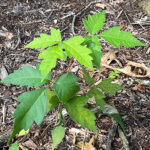
Earlier in life I enjoyed a lack of sensitivity to our old friend, poison ivy (Toxicodendron radicans). The allergic reaction to this plant can wax and wane throughout one's life, but most of us start out allergic and stay allergic, with the effects growing worse with each exposure. I had a friend that even got it in the winter, but I never did. Part of it was that I quickly learned to recognize it even at a distance, especially after noticing the resemblance to Fragrant Sumac (Rhus aromatica), a safe-to-handle ornamental native shrub. Check out this website here for some examples.
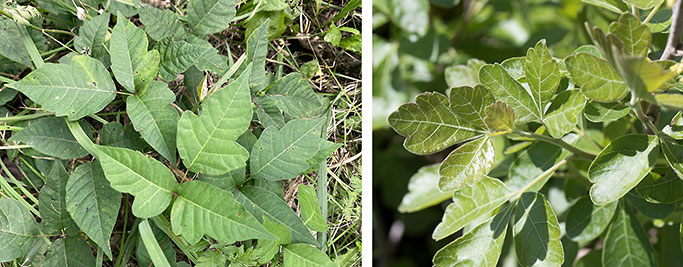
Poison ivy, left - 'Gro-Lo' Fragrant Sumac, right
However. A few years ago (OK, it was 15) I was surprised by a nasty case that required a course of steroids to get rid of. Maybe doing that woodland cleanup on a humid day wasn't such a good idea? Now I dedicate myself to avoiding poison ivy at all costs. I didn't encounter too much of it in my suburban garden but out here in my country garden holy heck it is everywhere. The tricky part is to not only look for those "leaves of three" but those tell-tale rooty vines clambering up tree trunks, with no foliage at eye-level where you stand a chance of noticing it, until popping great big leaves in the canopy, blending in with your hardwoods. Don't lean on any tree trunks!
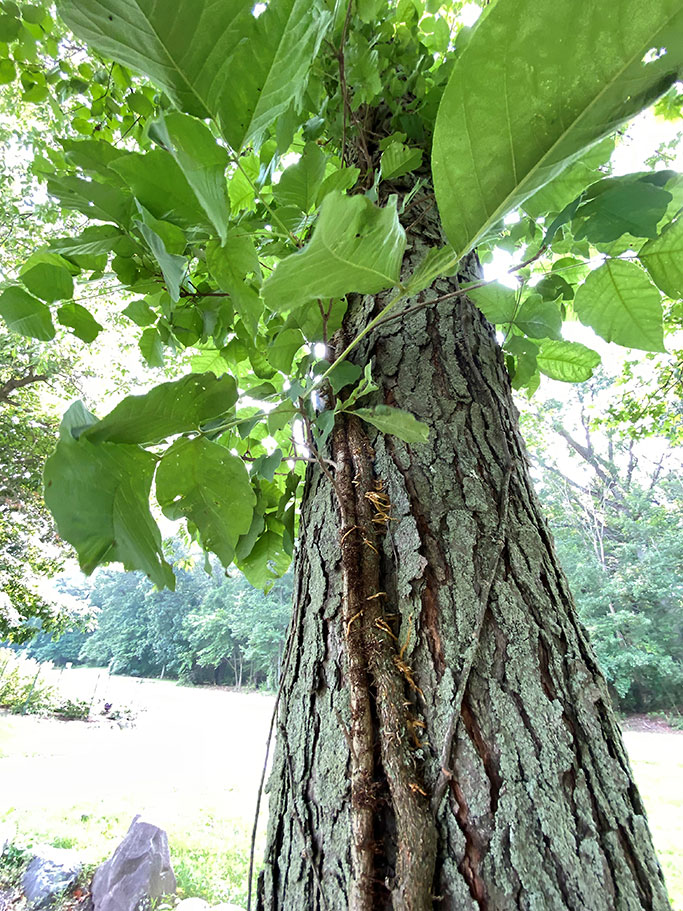
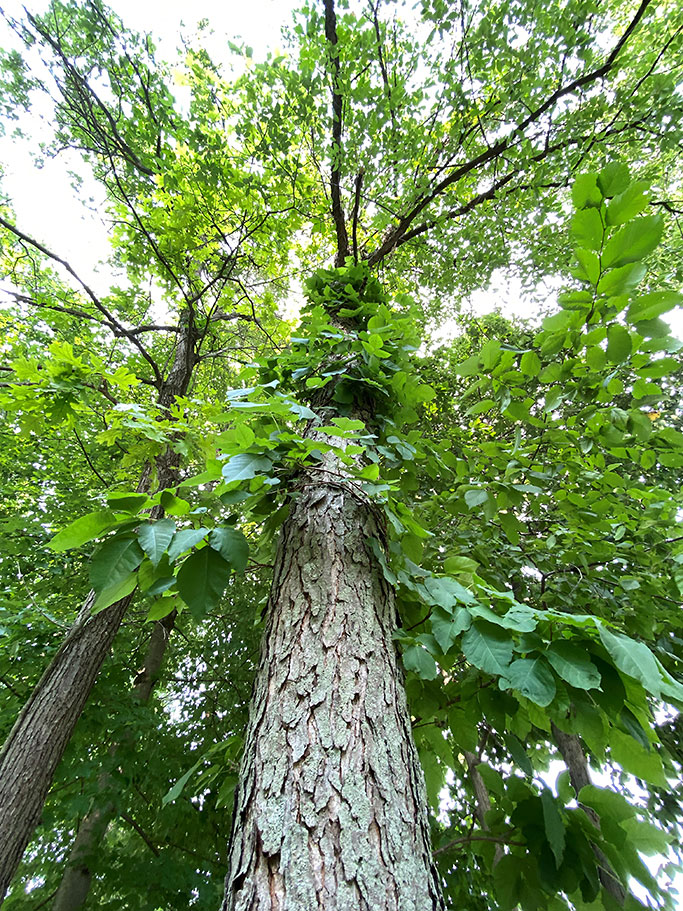
A major issue is that poison ivy foliage is extremely variable. The three-leaf thing is definitely an ID point, but the darn leaves can be notched or smooth, matte or a bit shiny. The one thing that seems constant is it's exceptional vigor - it looks green and healthy all season until it bursts into glorious fall color. And while poision ivy is usually seen as a vine or groundcover, it can get quite woody and shrublike with age.
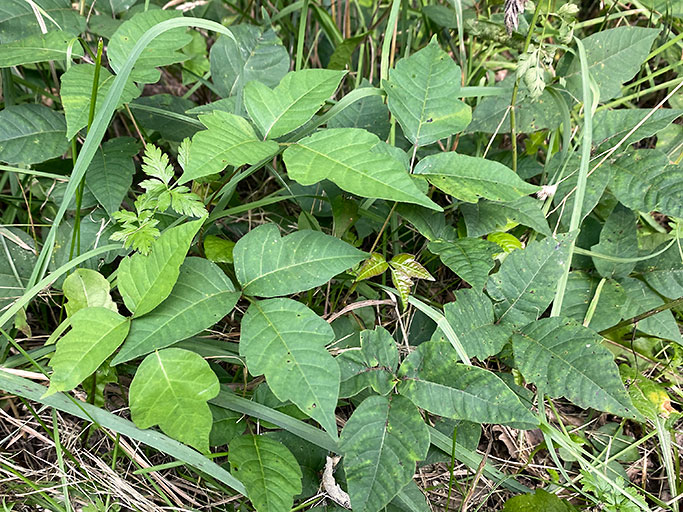
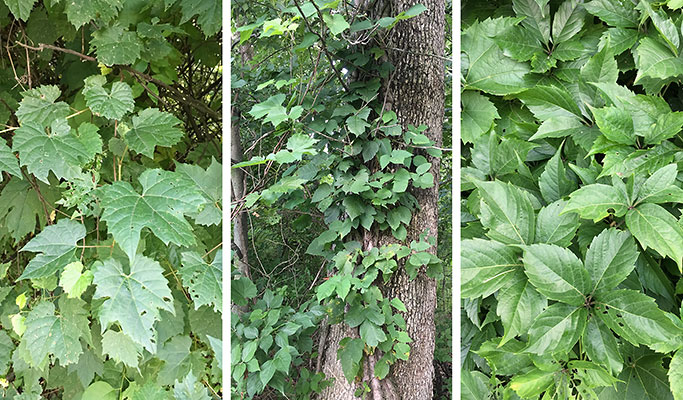
Left to right: Wild grape, poison ivy, and woodbine
Another thing that confuses people is that there are OTHER vining plants found in the same habitat. Can you reliably tell wild grape and woodbine (parthenocissus) from poision ivy? Another fooler - baby boxelder seedlings. Even I sometimes glove up to pull one, just to be on the safe side. But I will tell you, if you see white berries on a vine, you are looking at poison ivy. Incidentally those berries are a valued food for plenty of wildlife which helps explain why it comes up everywhere.
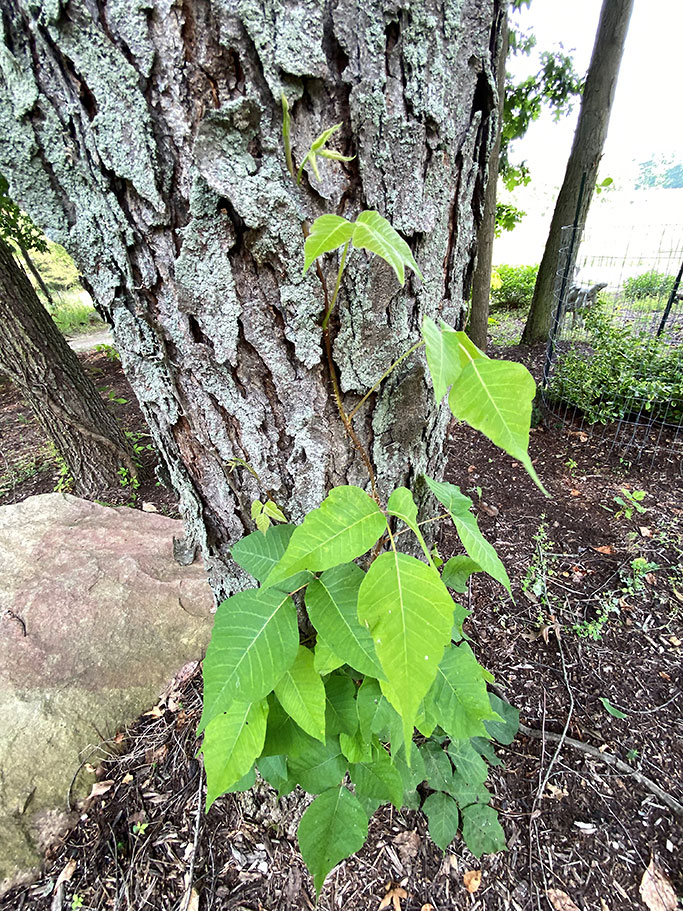
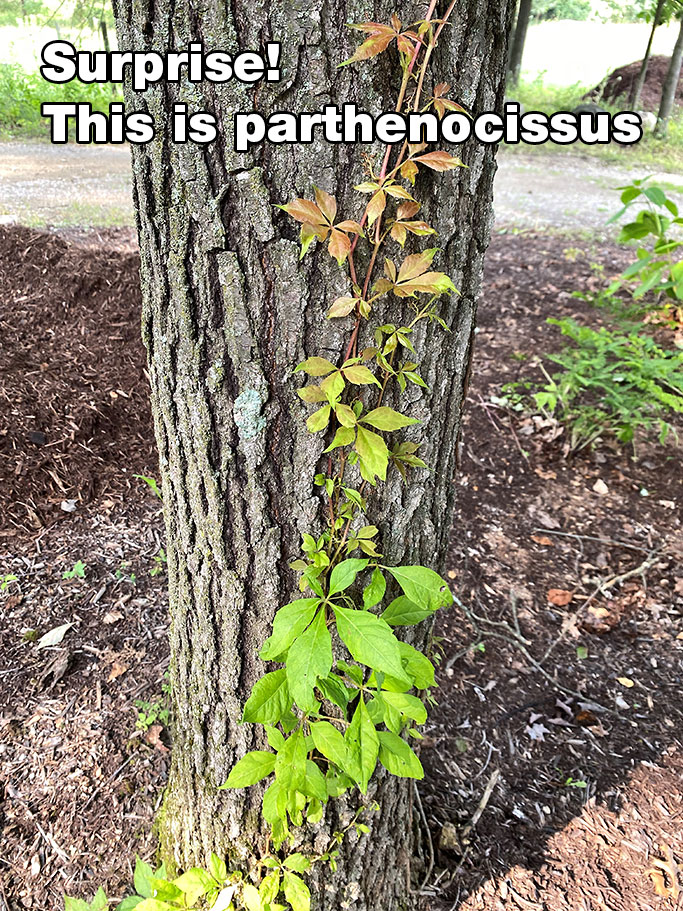
In other (unwelcome) news, climate change is is making poison ivy both more virulent and allergenic. Ugh. Climate change is making poison ivy stronger and itchier
To remove it one must either pull it or use Roundup (glyphosate). Sever the vines that are climbing your shade trees, treat the fresh-cut stump, and spray any regrowth that occurs. Forget those "organic" salt and vinegar recipes, it's just going to re-sprout, and salting the soil is undesirable. And you must never, ever burn it as the smoke is toxic. Goats eat it, so you could see about renting a herd of them to clean up your acre, like the City of Ann Arbor does. Keep a bottle of Technu by the sink, and in your work truck or garden tool bag for fast treatment if you think you've been exposed and you might save yourself a trip to the doctor for a steroid pack.
